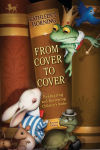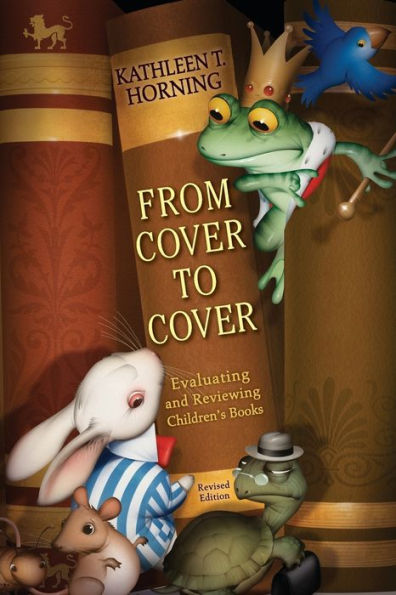Read an Excerpt
A Critical Approach to Children's Books
Reading a book for the purposes of evaluation and review requires more attention to detail than reading a book for personal pleasure or for information. When you read to evaluate, your assessment of the book will ultimately affect other potential readers. It may make a difference as to whether or not a book is purchased for a library or school or as a birthday gift for a child you'll never meet. In fact, it may make a difference as to whether or not the book is read by a child at all. It is your professional responsibility to try to take your evaluation beyond a personal response.
This is not to say that your personal response doesn't matter. It would be impossible, of course, for you to put it completely aside --you are a reviewer, after all, not a robot! What the responsible reviewer strives for is an informed and reasoned opinion, clearly articulated so that others can learn about books they haven't seen.
In essence, a children's book reviewer reads and writes with two audiences in mind: (1) adults who read reviews to help them select books for children and (2) the children themselves. It may also be read by the author and publisher of the book in question; however, neither is the intended audience for your review. In other words, it is not your goal to write a review to stroke an author's ego or to pick a bone with a publisher.
Still, it is important to remember that most books for children are created with the best intentions in mind. No one sets out to produce a crummy book that kids will hate. If this is your initial assessment of a book you're reviewing, it would be unfair and unwise to let it stand asyour final one without a great deal of further consideration. You'll need to take a closer look at the book. What was the author's intent in writing the book? What qualities did the editor see that led her to believe that the book merited publication? Why did the illustrator choose this particular style? The answers to all these questions have their origins in the history of the book's creation. While it isn't necessary for you know the details of a book's publishing history in order to review it, an understanding of the general context in which children's books are created will help you read more critically.
HOW CHILDREN'S BOOKS ARE PUBLISHEDMany publishing houses have divisions or departmentsthat are especially devoted to publishing books for young people. These were, for the most part, established in the 1920s and developed through the pioneering efforts of women such as Louise Seaman Bechtel, May Massee, Helen Dean Fish, Marian Fiery, and Virginia Kirkus, who were the first children's book editors. Unlike adult book divisions, which are driven by the consumer market (bookstore sales), children's book divisions developed largely in response to an institutional market. Sales to libraries and schools accounted for a high percentage of the total number of children's books sold. As library budgets began to shrink in the 1970s and 1980s, children's book publishers began to turn their marketing toward consumer sales as well, although the institutional market continues to be an important influence in the children's book industry.
There are books that are created specifically for one market or the other. Those that are produced for the institutional school market alone are called textbooks. They are generally sold to entire school districts rather than to individuals. They are also created in a separate division of the publishing industry that specializes in producing books to fit the exact needs of teachers working with specific school curricula and guidelines at various grade levels. Books that are produced with only the consumer market in mind are called mass-market books. These are generally produced as paperbacks or as picture books with inexpensive cardboard covers (such as Little Golden Books), and they may be sold in supermarkets, airports, dime stores, and convenience stores as well as bookstores. While there are publishers that specialize in producing mass-market books, most children's book departments produce mass-market books to some degree.
Books created for both the consumer market and the institutional market are called trade books. These are sold to schools and libraries. They are also sold directly to consumers through bookstores. Both quality and child appeal are taken into account when weighing the sales potential. From the publisher's point of view, the best kind of children's trade book is one that will succeed in both the consumer and the institutional markets and will continue to sell well for decades. This is the type of success guaranteed to a book that wins the Newbery or Caldecott Medal.
Most children's books start out as an idea in the mind of an author. That may seem obvious to you, but I mention it here because many people seem to have the notion that ideas start with publishers, who then assign them to authors. I often hear people ask children's editors: "Why don't you publish more books about X?" in a tone that suggests they hold editors personally responsible for the lack of X books. But editors don't tell authors what to write. They must wait for X to develop in the mind of the author, and then they have to determine if it's good enough to publish. The editors' role is to find and nurture the talents of authors and artists who will create good children's books. If they cast their nets wide enough, their catch may include an author who will come up with the idea of writing about X on her own.
Once a manuscript is accepted for publication, the editor works with the author to help shape the book into its final form. An editor may make suggestions about chapters that need to be rewritten, characters that need to be developed, or ideas that need to be clarified. The ultimate responsibility for the writing, however, rests with the author. From Cover to Cover. Copyright © by Kathleen Horning. Reprinted by permission of HarperCollins Publishers, Inc. All rights reserved. Available now wherever books are sold.






